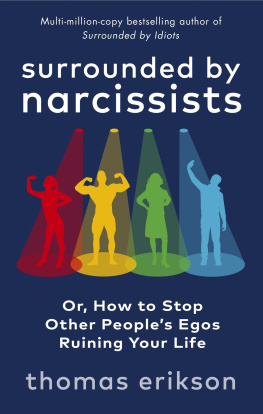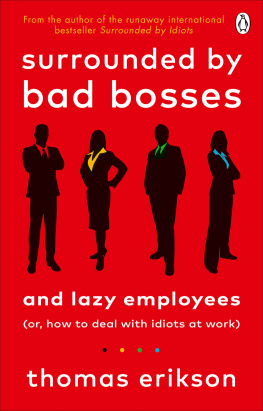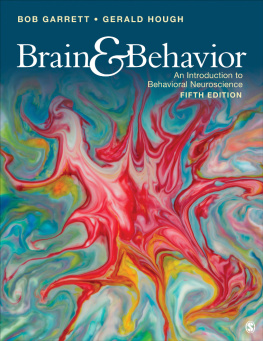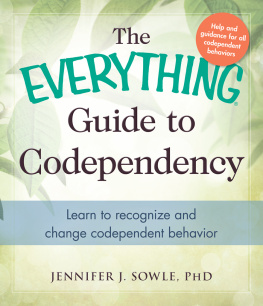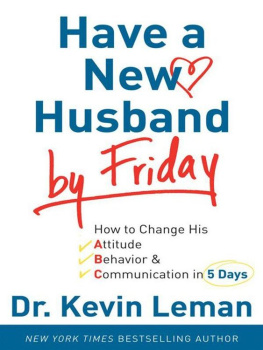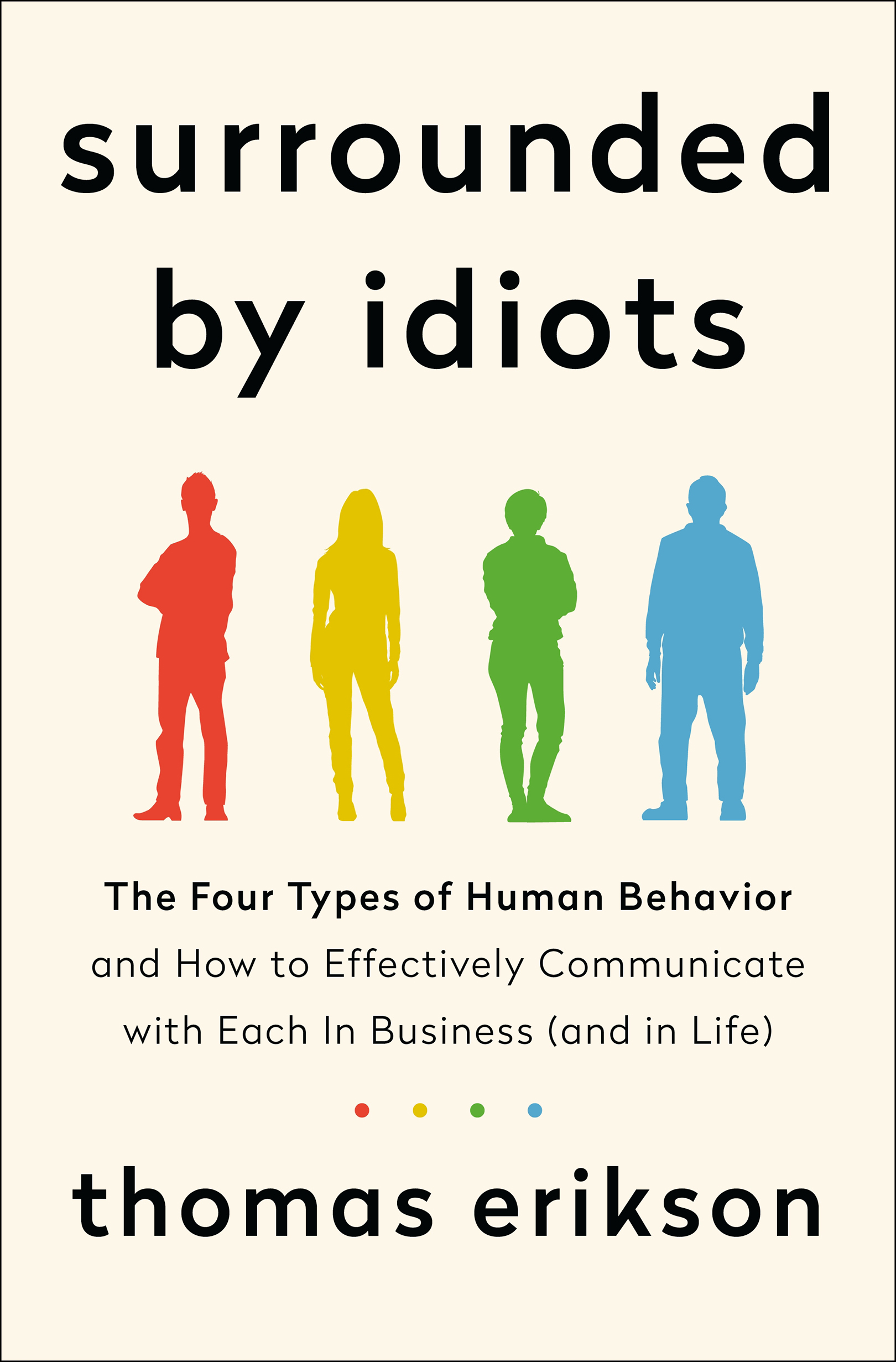The author and publisher have provided this e-book to you for your personal use only. You may not make this e-book publicly available in any way. Copyright infringement is against the law. If you believe the copy of this e-book you are reading infringes on the authors copyright, please notify the publisher at: us.macmillanusa.com/piracy.
Many years ago, Bill Bonnstetter and his son David developed a revolutionary software system based on the DISC methoda way of describing human communication and classifying behavior and the method that is used throughout this book. Sadly, Bill has since passed away, but David continues to run their companyTTI Success Insightsto this day. From its humble origins in rural Iowa, this method of behavior profiling has now been used by businesses and corporations all around the world.
It all began with one question. A simple, specific question: Could an agricultural salesperson sell more seed simply by looking at a farm?
As a child growing up in rural Iowa, I watched my father apply the foundational principles of William Moulton Marstons Emotions of Normal People. At the time, my father was focused on Buyer Profile Blending, giving agricultural salespeople the knowledge of Marstons tools to better understand themselves and their farmer customers. I can still recall the earliest days, sitting at a knotty-pine table over meals of hot pork tenderloins and roast corn, when my father was working through his observations. Pristine driveways and neat groves? Definitely a Blue. New and experimental livestock and buildings? Youre looking at a Red.
Although we were close, our paths were incredibly different. My father, a true entrepreneur and Red/Yellow in every sense of the phrase, was driven to build consulting firms and agencies that helped salespeople refine their craft. I sought the collegiate path, attending university at the University of Iowa, leaning into my Red/Blue nature while studying accounting and computer science. I spent my free time in the computer lab, pouring my soul into programs through my fingertips. While I was studying, my father perfected his wizardlike ability to understand people.
My father and I always remained close and spoke to each other most weeks, even though we were at different milestones in our lives. While I was studying at the University of Iowa, my father sat me down and asked me about contributing to his venture. He asked, What if we could couple your ability to develop software with my ability to analyze human behavior? I was ambitious, hungry for fun coding work, and proceeded to embark on the most exciting journey of my life. Together, we built a software system that would produce reports about human behavior. This was a multiplying factor; soon we were able to reach more people and reveal a persons potential through 3.5-inch floppy disks and twenty-four-page reports. My father and I built a company, TTI Success Insights, in 1984 in Iowa to do just that.
Over time, we escaped the frigid winters in the Midwest of the United States, relocated ourselves, our families, and our business to sunny and warm Scottsdale, Arizona. In the late nineties, we began using the web for distribution of our famed assessments. Today, we have a thriving business with distributors all over the world.
Up until now, you might have wondered why you are so different. Human behavior is, for the most part, complex and nebulous. In some cases, the people around us are idiotic. Understanding human behavior is a never-ending task, an endless pursuit to know the how, what, and why behind a persons choices. It is both easy and dangerous to categorize someone who behaves differently from you as ignorant, wrong, or even thickheaded. Todays world requires a more sophisticated understanding where you value a person for his or her strengths and weaknesses.
My father has since passed on. But the purpose we invoked, to reveal human potential, continues to live on. This book is written about the concepts my father applied in sales trainings and applies them to an even more complex situationunderstanding the idiots who surround us all.
As you read, I think you will understand the worth of a Red, a Yellow, a Green, and a Blue. I hope you will pull away some practical advice in communicating effectively with each type. But the most important lesson that you can walk away with is that the idiots who surround you are, in fact, not idiots at all. Instead, they are individuals worthy of respect, understanding, and being valued.
Anyone can use the frameworks outlined in this book to get ahead in the game of life. And look at it this way: If you dont understand and use the principles, youll continue to be surrounded by idiots. And nobody wants that.
David Bonnstetter
Chief Executive Officer
TTI Success Insights
I was in high school when I first noticed that I got along better with certain people rather than others. It was easy to talk to some of my friends; in any conversation, we always found the right words and everything just flowed smoothly. There were never any conflicts, and we liked one another. With other people, however, everything just went wrong. What I said fell on deaf ears, and I couldnt understand why.
Why was speaking to some people so easy, while others were total blockheads? Since I was young, this certainly wasnt something that kept me awake at night. However, I still remember puzzling over why some conversations flowed naturally, while others didnt even startno matter how I conducted myself. It was just incomprehensible. I began using different methods to test people. I tried to say the same things in similar contexts just to see what reaction I got. Sometimes it actually worked and an interesting discussion developed. On other occasions, nothing happened at all. People just stared at me as if I were from another planet, and sometimes it really felt that way.
When were young, we tend to think of things very simply. Because some people in my circle of friends reacted in a normal way that meant, of course, that they were automatically the good guys. And so I just assumed there was something wrong with the people who didnt understand me. What other explanation could there possibly be? I was the same all the time! Certain people just had something wrong with them. So I simply began to avoid these weird, difficult people because I didnt understand them. Call it the navet of youth if you will, but it did give rise to some amusing consequences. In later years, however, all of this changed.
Life went on with work, family, and career, and I continued to pigeonhole people into two groupsgood and sensible people and all the rest, the people who didnt seem to understand anything at all.
When I was twenty-five years old, I met with a man who was self-employed. Now in his sixties, Sture had founded his own business and built it up for many years. I was given the task of interviewing him just before a new project was to be implemented. We started talking about how things were functioning in his organization. One of the very first comments Sture made was that he was surrounded by idiots. I remember laughing at the time because I thought it was a joke. But he truly meant what he said. His face turned crimson as he explained to me that the people working in Department A were complete idiots, every single one of them. In Department B you found only fools who understood nothing at all. And he hadnt even come to Department C yet! They were the worst of all! They were so weird that Sture couldnt fathom how they even made it to work in the mornings.



